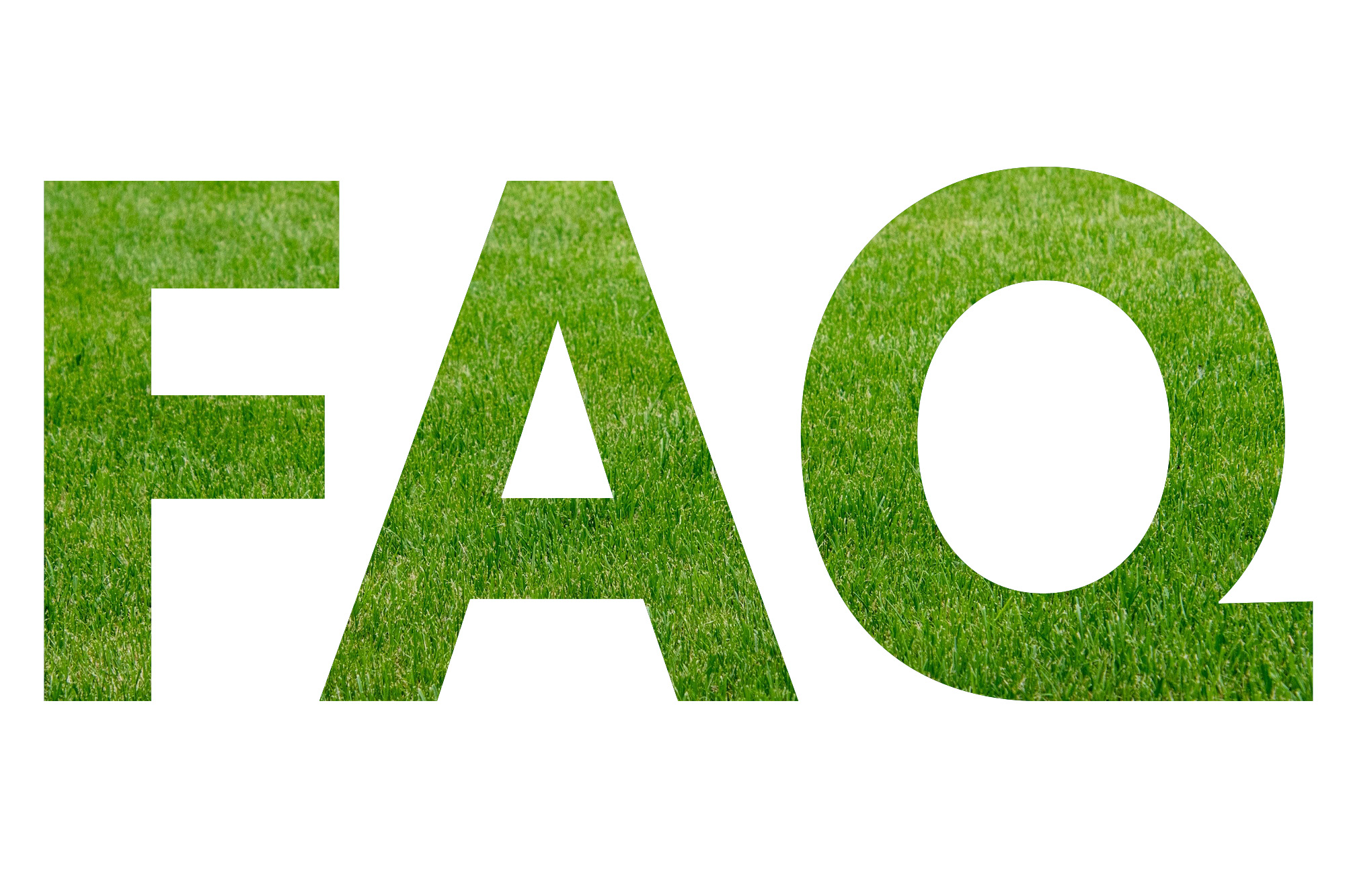
Ask The Experts
Answers to our most Frequently Asked Questions
How soon after a treatment can we mow the lawn?
It is best to wait 24 hours after our treatments before mowing. The primary reason is to allow our weed control materials to be absorbed and translocated throughout the weed plant before a mower cuts off the treated weed leaf.
Should I water the lawn after your treatment?
We leave watering instructions at your door after every treatment. In most cases, you should wait at least 2 hours after a treatment before watering. This is primarily to allow weed control materials to be absorbed by the weed leaves and not washed off. After 2 hours, it is always beneficial to water in the fertilizer to get it down to the root systems. Even without watering, the fertilizer will work its way into the soil with help from natural dew moisture and any rainfall.
Why can’t I wait longer between mowings, reducing time spent on lawn care?
It may come as a surprise that mowing the lawn is about more than just keeping your lawn’s height under control. If done properly, mowing stimulates the grass of your lawn to lushness and better health, just as pinching a garden plant can improve its appearance. Proper mowing technique is an important aspect of overall lawn care.
Is there a right and a wrong time for lawn mowing?
Yes. Lawn mowing should not be done when the grass is wet (under which conditions disease can be introduced, plus you incur the risk of slipping and getting injured). Also, lawn mowing in the evening puts less stress on the lawn than lawn mowing when the sun is pounding down in the afternoon.
The AllGreen Advantage
Get the AllGreen Advantage! Why are AllGreen services the right way to go?
AllGreen Lawn, Tree & Shrub Care Tips
AllGreen Tip #1: Watering
Watering is critical to maintaining a healthy lawn. View our Watering Instructions.
In general it is best to learn your lawns watering needs by monitoring for signs of heat and moisture stress. A lawn will typically turn a darker purple like shade of color when heat or moisture stress is beginning. This will lead to a dormancy brown color if it does not get water quickly. By observing this process you can develop a watering schedule that fits your lawn. More frequent watering may be needed during extreme hot weather periods or heat waves. Water less, save money, and have a better lawn!
AllGreen Tip #2: Mowing
Proper mowing practices are essential in maintaining a healthy lawn.
Most quality grass types in our area should be mowed at a 2 ½” to 3” height. Higher mowing heights encourage deeper rooting and therefore stronger grass plants. A lawn should also be mowed frequently enough so that no more than 1/3 of the leaf blade is being removed at one time. Cutting more than 1/3 of the leaf blade off can shock the plants into a stressed condition.
AllGreen Tip #3: Aeration
Aeration works by removing thousands of small cores of soil 1” to 3” in length from your lawn.
These cores slowly break down back into the lawn over a few weeks time. The holes created by aeration allow fertilizers, water and air to get down deeper into the root zones while relieving soil compaction. This results in stronger, healthier root systems necessary to achieve the best quality lawn possible.
AllGreen Tip #4: Seeding
The months of September and October are the best time of the year to do any lawn seeding that is needed.
The cooler weather is ideal for young seedlings to start growing while summer annual weeds begin to decline. Fall seed establishment also allows the grass to get mature enough by springtime so that the crabgrass control application can be safely applied. Kentucky bluegrass varieties are best suited for sunny lawns, with some perennial ryegrass and red fescue’s acceptable in the mix. For shady areas, a higher percentage of red fescue’s should be in the mix with shade tolerant Kentucky bluegrasses and perennial ryegrass. In purchasing grass seed, you usually get what you pay for in quality.
Mosquito Control
Are bug lights effective against Mosquito’s?
Ultraviolet bug lights, or ‘zappers’ are relatively ineffective against mosquitoes, who seek light colors, heat and carbon dioxide, none or which is emitted by zappers. In addition, zappers kill indiscriminately, eliminating insects that are beneficial, as well as those who may feed on mosquitoes.
How soon after an application can I enter the sprayed area?
It’s safe to reenter a treated area as soon as the treatment is completed.
Can mosquitoes cause and spread disease?
Yes. Mosquitoes are the most formidable transmitters of disease in the animal kingdom. Several of the most severe diseases (human and other) spread by mosquitoes include malaria, encephalitis, yellow fever, dog heartworm, human elephantiasis, Zika virus and West Nile virus.
Do mosquitoes transmit AIDS?
No. The AIDS virus cannot survive or multiply in mosquitoes. It is digested along with the contents of the blood meal.
